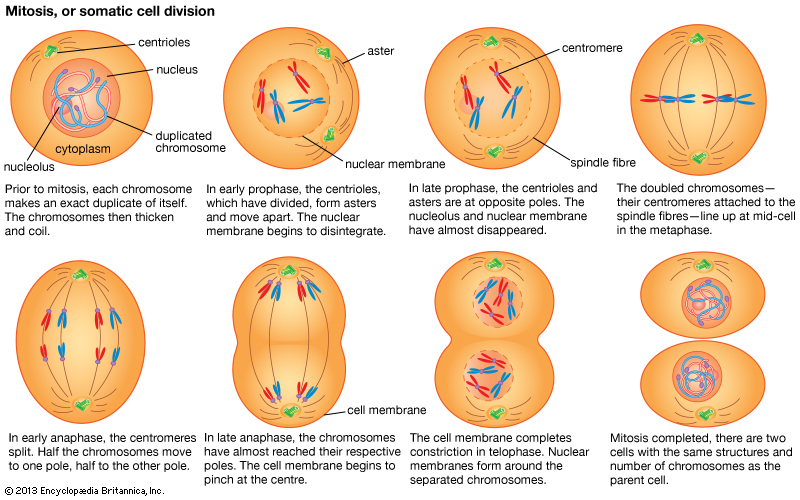At what point during mitosis has the nuclear membrane reformed?
1 Answer
Telophase.
Explanation:

Mitosis is a cell division which involves somatic cells. It means all the cells in our body except the gametes (sperm and egg cells). Somatic cells are diploid represented by 2n, while gametes are haploid represented by n. Diploid means that there are two sets of chromosomes; haploid, on the other hand, has a single set of chromosomes. In mitosis, the cell divides only once unlike in meiosis, there is meiosis I and meiosis II.
In mitosis, there are four main events:
P - Prophase
M - Metaphase
A - Anaphase
T- Telophase
-
Prophase: The genetic material (in the form of chromatin) will start to condense and turn into a chromosome. The centrioles, which have divided during interphase, will form asters (animal cells only) and they will migrate to opposite poles of the cell. The nuclear membrane will temporarily disintegrate. At the end of the prophase, nuclear membrane is already gone.
-
Metaphase: The chromosomes, specifically the centromere, will align at the equitorial plate or the metaphase plate. The spindle fibers arising from the centrioles (now as centrosome) will attach to the kinetochore (found in the centromerere region of the chromosome).
-
Anaphase: The spindle fiber shortens causing the chromosomes to move at opposite poles. The centromere is divided into half, as well as the chromosome. One half of the chromosome goes to one pole and the other half goes to the opposite pole. In the late anaphase, the chromosome are nearing their respective plates causing to form a slight cleavage.
-
Telophase: Chromatids have arrived at opposite poles of the cell. The cleavage (cleavage furrow for animal cell; cell plate in plant cell) intensifies. Cell membrane starts to re-form; spindle fibers begin to disappear; and the chromosomes start to uncoil and return to chromatin.
-
Cytokinesis: Mitosis completed. Two identical cells are formed having the same set of chromosomes. Daugther cells will proceed back to interphase (most common stage in cells because of time longevity)
